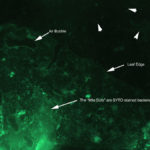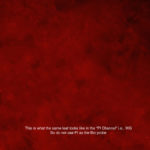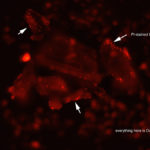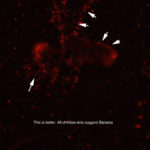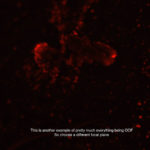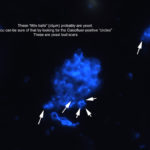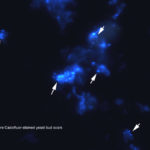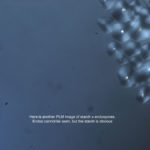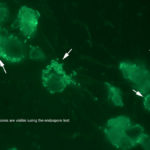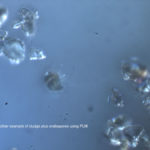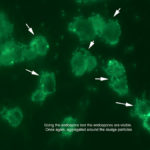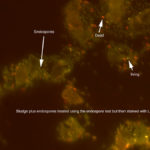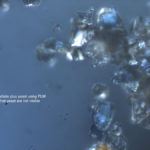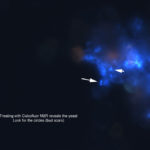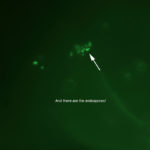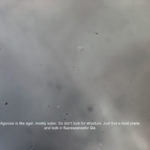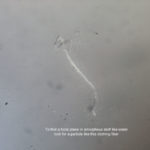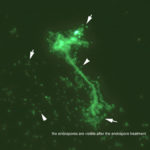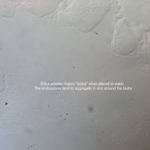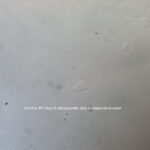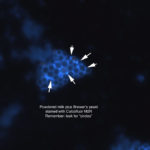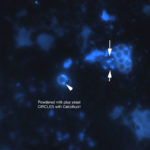Here are some example FPAT images with annotations. If you have taken the MCRI Fluorescence course this is Exercise 10 “Analysis of Known Samples”.
Lactobacillus on leaves.
The key here is to remember leaf (“foliar”) material is highly autofluorescent, especially in the WG (red) channel. It’s easiest to prep a very small piece of leaf and look at the edges of the piece for bio.
Sweet'n Low with Lactobacillus
Surface swipe with yeast
The key for identifying yeast is to use Calcofluor M2R (Insti-Fluor CF) and look for the yeast bud scars. These are tiny fluorescing circles.
Starch plus B. subtilis endospores
If you are interested in identifying endospores (non-fluidized) you must use the endospore test (either wet or Insti-slides)
Sludge sample plus endospores
Sludge, or any liquid, may have endospores if the osmolality of the liquid is high enough. Here is an example.
You may test the same sample for viability (remember that endospores germinate quickly) by staining with LD.
Silicon carbide (Carborundum) plus yeast.
Yeast? Use Calcofluor M2R.
Agarose plus endospores (B. atrophaeus).
Agarose is like agar in that it’s essentially water, so edges are hard to find. The easiest procedure is to do the endospore test and focus using fluorescence.
Sampling a surface with a cotton swab can pick up Bio (including endospores)
Silica powder is a common carrier for endospores (especially in FPATs)
Silica powder is also amorphous. So look for something to focus on in BF, or switch to fluorescence to look for Bio.
Powdered milk is another common FPAT carrier. Here we've added bacteria (Lactobacillus).
You may use any fluorescent DNA probe when looking for bacteria. Here we’ve used PI (after testing for autofluorescence).
Powdered milk plus Brewer's yeast
If you are looking for yeast, use Calcofluor M2R.
